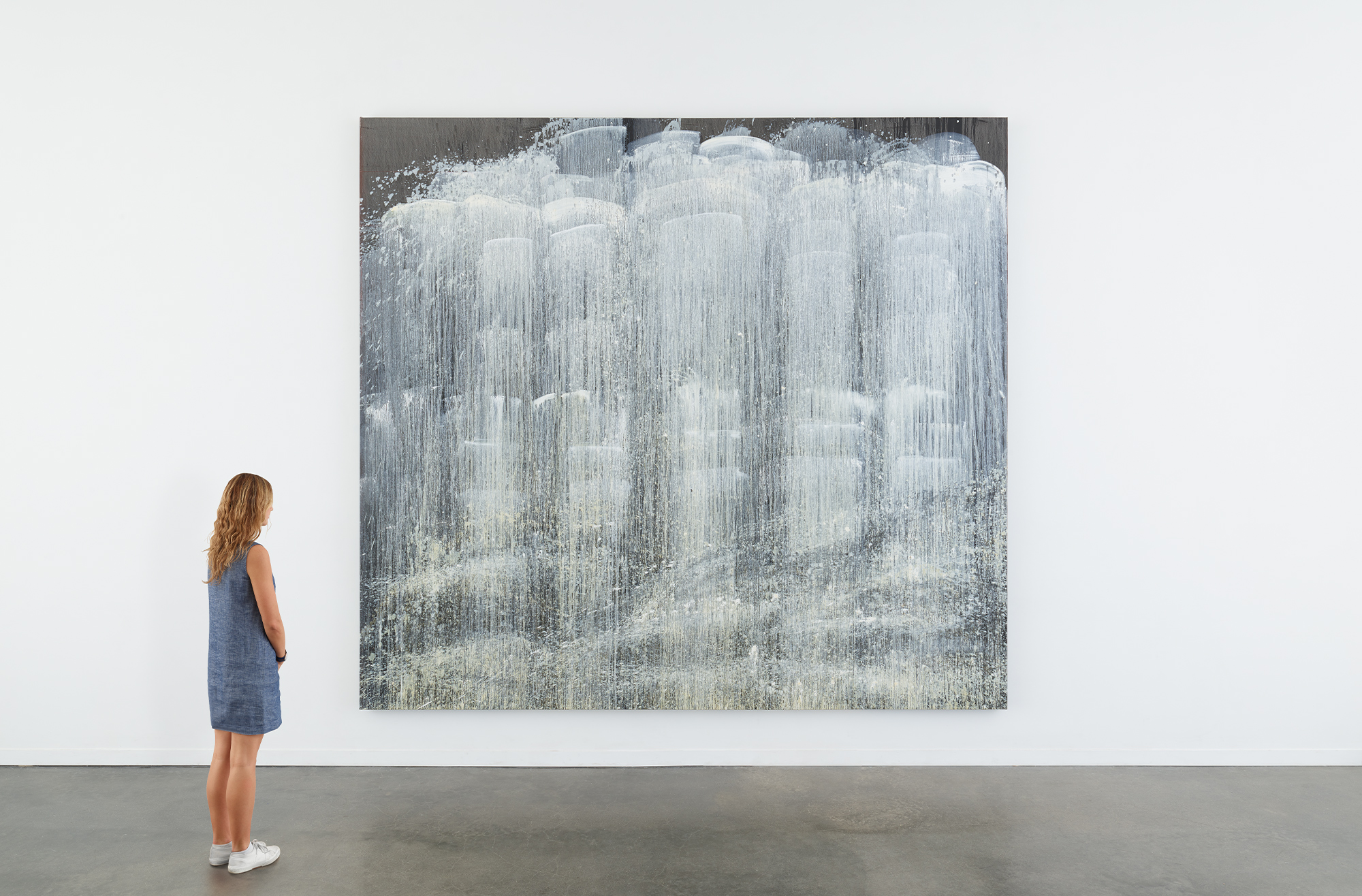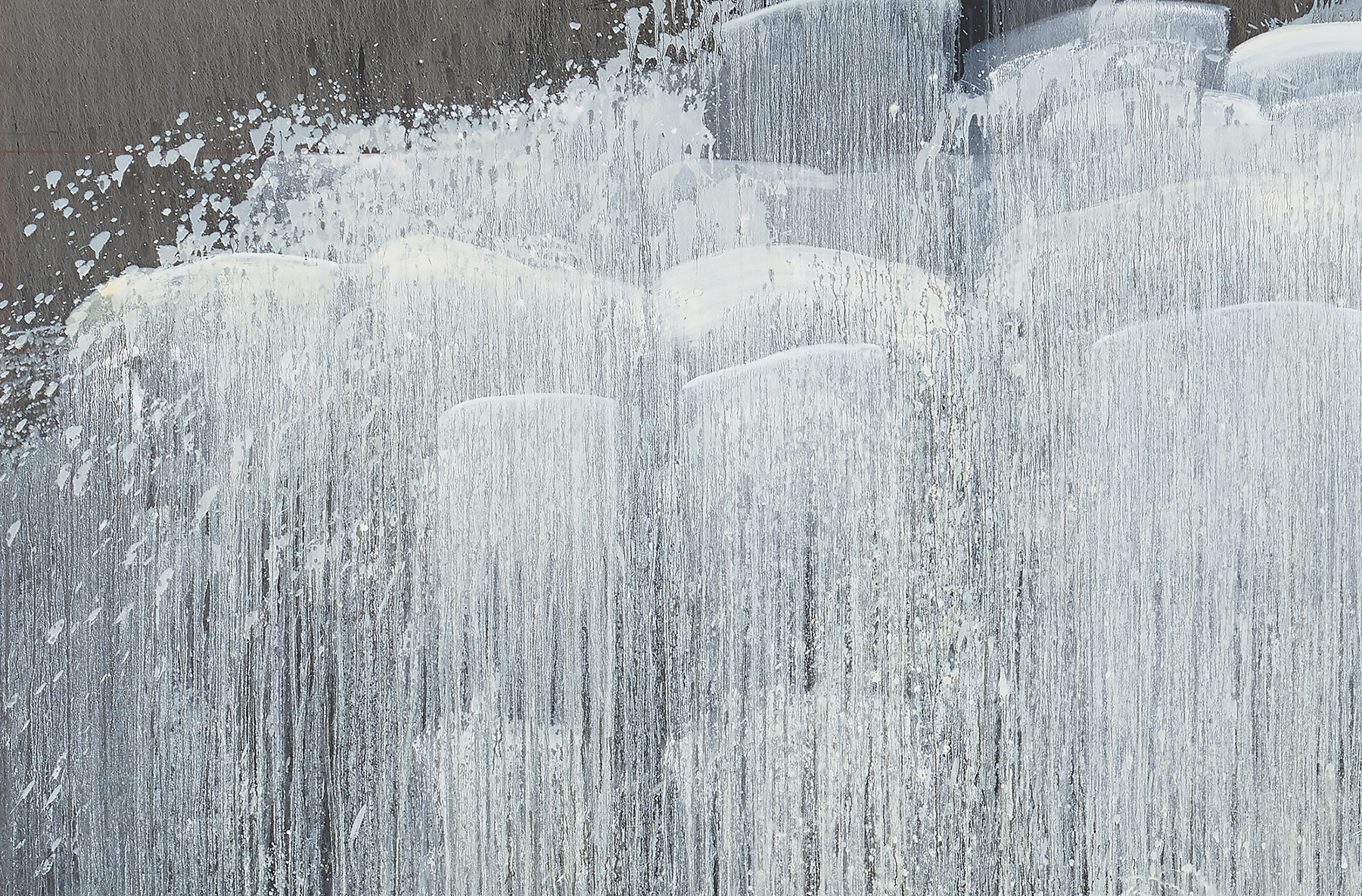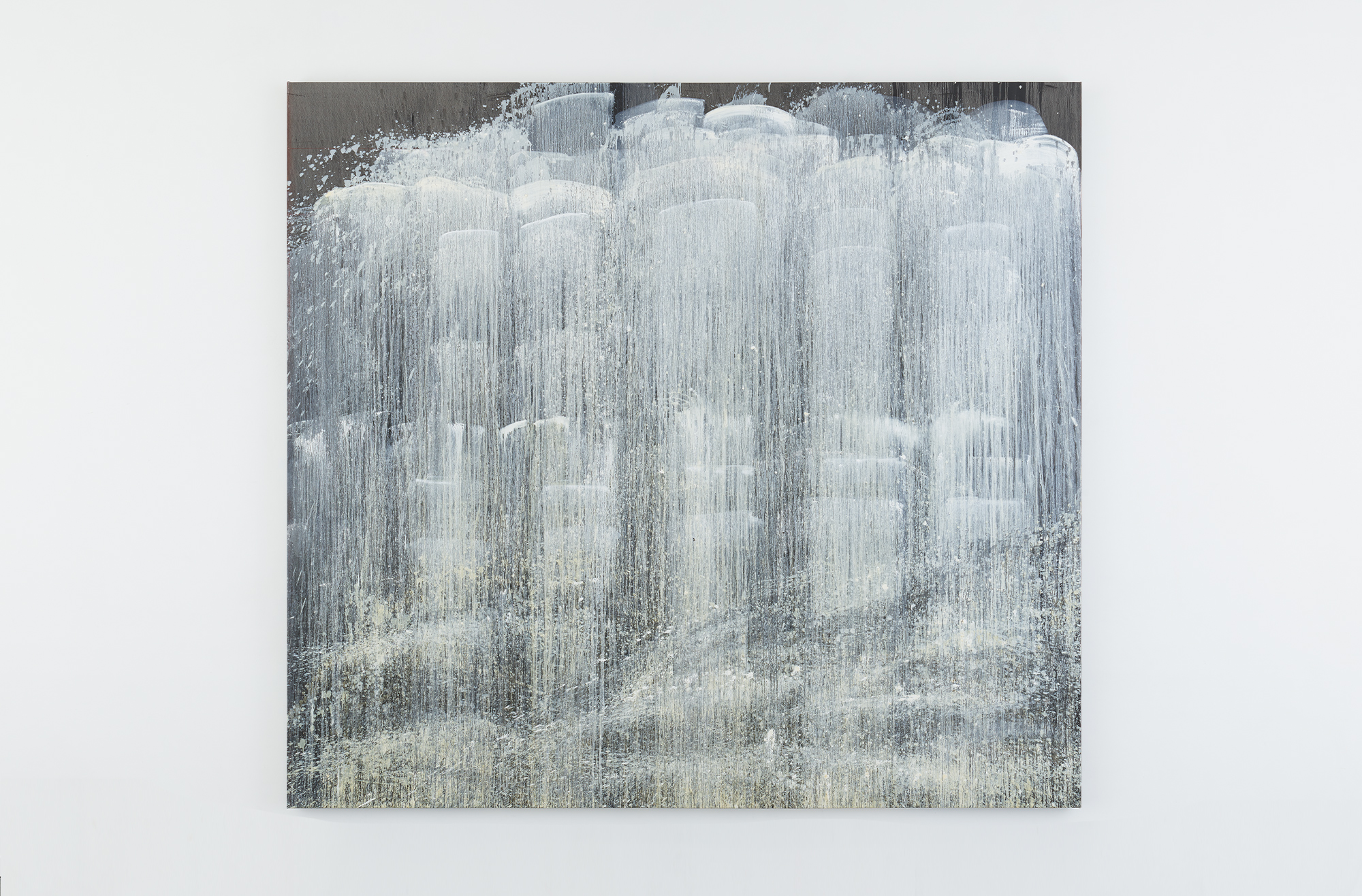Pat Steir帕特·斯蒂爾
Tyne Panorama 1, 1990
泰恩河全景1, 1990年作
$850,000
Oil on canvas
132 x 144 inches (335.3 x 365.8 cm)
油彩 畫布
335.3 x 365.8 厘米 (132 x 144 吋)
© Pat Steir
The dripping, cascading paint in effect is the waterfall that it represents. The sign and the thing are compacted, one and the same, somewhat as word and picture are combined in calligraphy. —Thomas McEvilley
For five decades, Pat Steir has actively pursued painting as a conceptual practice. Sharing a deep affinity with the nascent discourse of postmodernism of the 1970s while always charting her own course, she was drawn to the reductive purity of Minimalism and developed a deconstructive approach to her chosen medium. By the end of the 1970s she had distilled her visual language down to nearly abstract, landscape-style paintings executed with masterful gestures. Initiated in 1985, the Waterfall paintings were a logical extension of these works, and it was with this series that Steir began to pour and fling paint directly onto the canvas. This forceful incorporation of gesture brought the artist’s practice into a close and multifaceted relationship with the represented object.
Monumentally scaled, Tyne Panorama 1 (1990) measures an expansive twelve feet across. To create it, Steir applied washy pigment in densely defined passages (sites of the initial contact between brush and canvas) that stream down the dark matte ground in cascading vertical drips. She has also flung paint onto the lower third of the canvas, adding an active horizontal vector to its composition. These elements index the movement of the artist’s gestures, imprinting a material trace of her ephemeral performative acts. The subject of Steir’s Waterfall paintings is the paint itself, literally manifesting what it purportedly represents. The scale and space of these works present an immersive, non-representational but recognizably figurative and architectonic space expressed through organically dissolving and emerging forms within the non-hierarchic, centerless composition. Indeed, these works are sites where myriad artistic philosophies that emerged across multiple centuries and continents converge and coalesce to create a body of work that cannot be wholly incorporated into any one movement or paradigm outside of those established by Steir herself.
Steir has lately completed two major suites of monumental, rigorous Waterfall projects: Silent Secret Waterfalls for the Barnes Foundation in Philadelphia and Color Wheel for the Hirshhorn Museum and Sculpture Garden, Smithsonian Institution, Washington, DC.
-
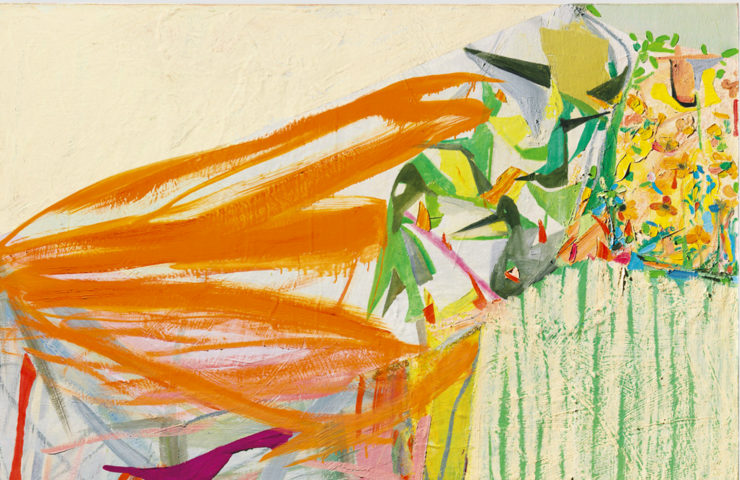
Amy Sillman艾米·希爾曼
Cliff 1, 2005
懸崖1, 2005年作
-
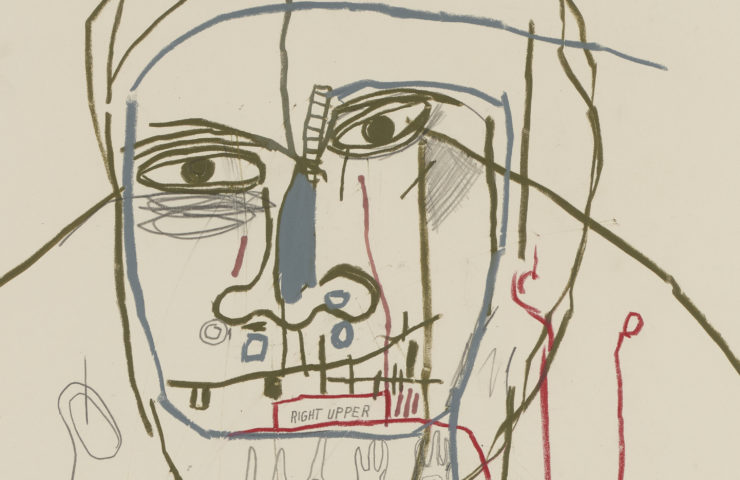
Jean-Michel Basquiat讓-米歇爾·巴斯奎特
Untitled (Head), 1983
無題 (頭部), 1983年作
-
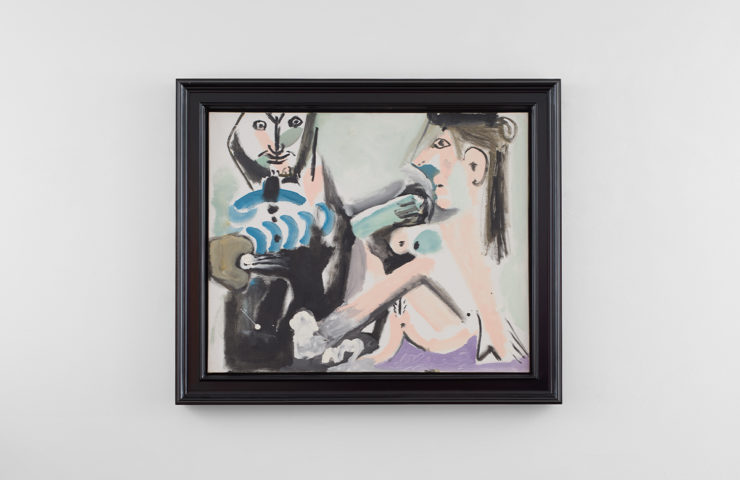
Pablo Picasso巴布羅·畢卡索
Le peintre et son modèle November 9, 1964
畫家和他的模特 1964年11月9日 -
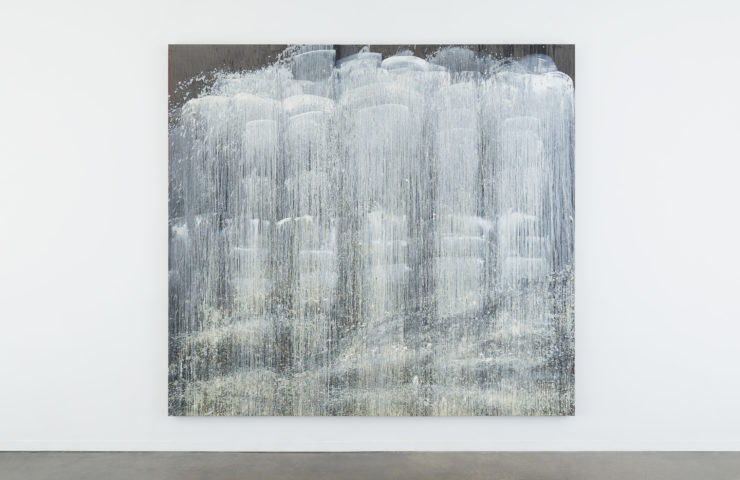
Pat Steir帕特·斯蒂爾
Tyne Panorama 1, 1990
泰恩河全景1, 1990年作 -
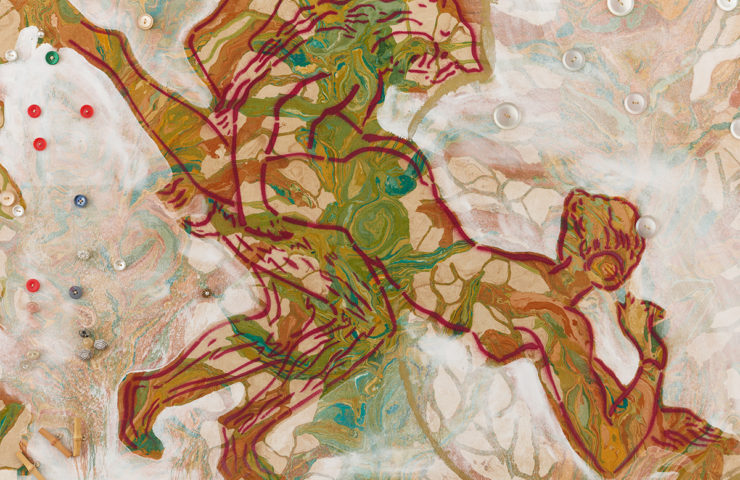
Sigmar Polke西格瑪·珀爾克
Untitled, 1980–81
無題, 1980–81年作
-
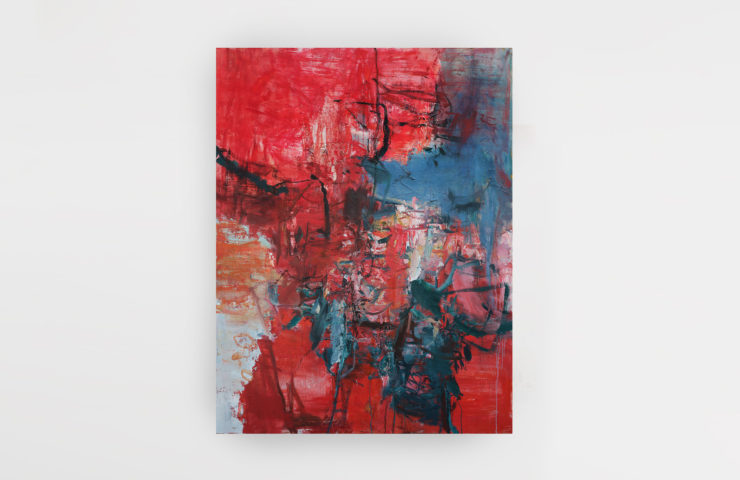
Tu Hongtao屠宏濤
Little Forest, 2017–19
小樹林, 2017–19年作

